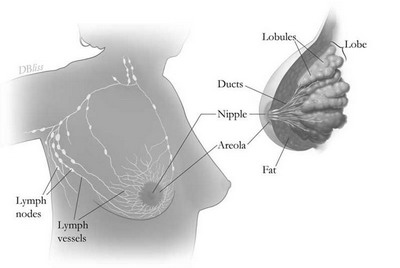One of the first thing is surgery. This is usually the first treatment that is used, and which surgery is appropriate for you depends on what your doctor says. The factors that it depends on include the stage of your cancer, the personality of it, and what seems acceptable to you.
You could go for mastectomy and lumpectomy. Lumpectomy is known as breast-conserving surgery, and it removes only the tumor and a small amount of surrounding tissue. Mastectomy is the removal of the whole breast tissue. There is partial mastectomy (also known as segmental mastectomy, which removes the part of the breast that has cancer, and some normal tissue around it), total mastectomy (which removes the whole breast that has cancer, some of the lymph nodes under the arm may also be removed for biopsy), modified radical mastectomy (removal of the whole breast that has cancer, some of the lymph nodes under the arm, the lining over the chest muscles, and sometimes part of the chest wall muscles).
Then there is also lymph node removal – which is also called axillary lymph node dissection, this can take place during the lumpectomy and mastectomy, if the biopsy shows that the breast cancer has spread outside the milk duct. Sentinel lymph node dissection is known to be less intrusive. Then there is also breast reconstruction, which means the rebuilding of the breast after mastectomy and sometimes even lumpectomy. However, some women may want just prosthesis, opting not to go for breast reconstruction. Also available is prophylactic mastectomy, which means preventive removal of the breast, in order to lower or eliminate the risk of breast cancer in those people who are at high risk. Finally, among surgery options, there is also prophylactic ovary removal, which is also a kind of preventive surgery – it lowers the amount of estrogen in the body, thus it is harder for the stimulation of the development of breast cancer.

You could go for mastectomy and lumpectomy. Lumpectomy is known as breast-conserving surgery, and it removes only the tumor and a small amount of surrounding tissue. Mastectomy is the removal of the whole breast tissue. There is partial mastectomy (also known as segmental mastectomy, which removes the part of the breast that has cancer, and some normal tissue around it), total mastectomy (which removes the whole breast that has cancer, some of the lymph nodes under the arm may also be removed for biopsy), modified radical mastectomy (removal of the whole breast that has cancer, some of the lymph nodes under the arm, the lining over the chest muscles, and sometimes part of the chest wall muscles).
Then there is also lymph node removal – which is also called axillary lymph node dissection, this can take place during the lumpectomy and mastectomy, if the biopsy shows that the breast cancer has spread outside the milk duct. Sentinel lymph node dissection is known to be less intrusive. Then there is also breast reconstruction, which means the rebuilding of the breast after mastectomy and sometimes even lumpectomy. However, some women may want just prosthesis, opting not to go for breast reconstruction. Also available is prophylactic mastectomy, which means preventive removal of the breast, in order to lower or eliminate the risk of breast cancer in those people who are at high risk. Finally, among surgery options, there is also prophylactic ovary removal, which is also a kind of preventive surgery – it lowers the amount of estrogen in the body, thus it is harder for the stimulation of the development of breast cancer.


No comments:
Post a Comment